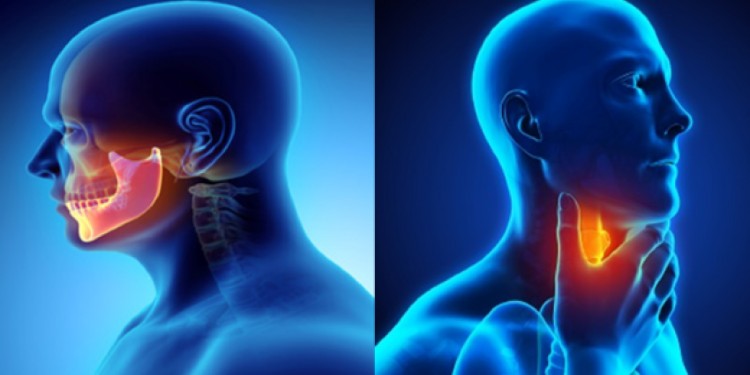
WHAT IS HEAD & NECK CANCER ?
Head and neck cancer is a term used to denote cancer that develops in the mouth, throat, neck, nose, sinuses, salivary glands, thyroid or other areas of the head and neck. Most of these cancers are squamous cell carcinomas, or cancers that begin in the lining of the mouth, nose and throat. Eighty-five percent of head and neck cancers are linked to tobacco use, and 75 percent are associated with a combination of tobacco and alcohol use.
WHY ARE THEY IMPORTANT ?
- Since majority of them are caused by tobacco-alcohol addiction and/or poor nutrition, they are preventable cancers. Yet, they form the bulk of head neck cancers in our country, with untold suffering and massive socioeconomic loss.
- Head neck cancers and their treatment involve critical aspects of living like breathing, smelling, talking, eating, swallowing, and appearance. As the treatment modalities have evolved, there have been improvement in survival, and patients therefore have to live longer with its sequelae.
- A lifetime of frequent and careful follow-up is important because such patients have an increased risk of developing a recurrence or a second cancer.
WHY DO THEY HAPPEN (MAJOR RISK FACTORS)
- Most of them are tobacco induced. Tobacco in any form, whether smoked (cigarettes, bidi, cigar, pipe etc) or smokeless (khaini, gutkha, pudiya, gulmanjan, soorti, paan masala etc) is a the strongest risk factor. The habit of stuffing paan in the mouth while working long hours, is a unique risk factor not found elsewhere in the world, except the Indian subcontinent. Each individual ingredient of paan, ie supari, tobacco, masala and kattha wrapped in betel leaves, is carcinogenic.
- Alcohol acts as an independent risk factor, and also potentiates the effect of tobacco by making its carcinogens more soluble, which can then be easily absorbed by the lining of the oral cavity and oropharynx. Therefore, alcohol and tobacco together are synergistic, not additive, ie 1+1=11, not 2.
- Since the entire lining of the mouth, throat, airway and foodpipe is affected by smoking and drinking, patients are susceptible to develop second primary tumours. These tumours which occur in another place after successful treatment of the first one.
- A non healing ulcer in the mouth
- A lump in the throat or neck, with or without pain
- A persistent sore throat
- Trouble swallowing (dysphagia)
- Unexplained weight loss
- Frequent coughing
- Change in voice or hoarseness
- Ear ache or blocked ears
- A red or white patch in the mouth
- Bad breath that's unexplained by hygiene
HOW TO SUSPECT HEAD NECK CANCERS ?
The mouth, throat and neck are the most common areas affected by head neck cancers. Symptoms depend on where the cancer develops and how it spreads. These tumors often cause symptoms that are similar to less serious conditions. So, these symptoms and signs are not diagnostic for throat cancer because many other problems like common cold, sinusitis or acid reflux can mimic head neck cancer. However, any person who develops these symptoms and has risk factors should immediately consult in the clinic.